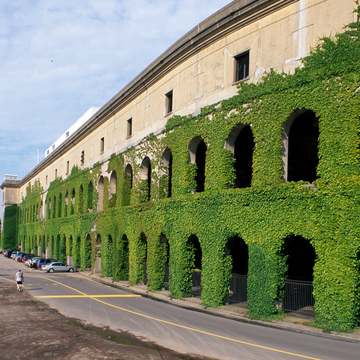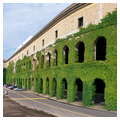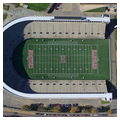At the turn of the twentieth century, architects and engineers collaborated in significant ways on the development of Harvard's Allston athletic area. In 1890 Harvard acquired land on the south bank of the Charles River to serve a growing athletics program. Seven years later, a fence, Carey Cage for indoor sports, and a superintendent's house were erected, all designed by H. Langford Warren, Harvard's first professor of architecture. Although the cage and house have been demolished, the fence still defines the complex. Carey Cage, Harvard's first steel-frame building, was designed by Warren and another engineering professor, Lewis J. Johnson. Johnson and Hollis, working with architects Charles F. McKim and George Bruno de Gersdorff, directed the construction of the Harvard Stadium (NHL/NR) in 1901–1903. The stadium became the world's largest ferroconcrete structure of the period. Based on Greek stadia and Roman circuses, it was planned to accommodate football. Steel girders formed its underpinnings, concrete was poured for the walls, and precast concrete was used for the seating. The stadium was sited so that it opened to the river. In 1926, the structure's longitudinal axis established the location for Guy Lowell's Briggs Cage—a final essay in brick and concrete before a more conservative variant of Georgian Revival spread to the athletic area. The 1980s and 1990s witnessed substantial expansion of athletic facilities, unified by Harvard brick and recently flirting with postmodern uses of the Georgian Revival mode.
You are here
Soldiers Field Athletic Area, Harvard University
If SAH Archipedia has been useful to you, please consider supporting it.
SAH Archipedia tells the story of the United States through its buildings, landscapes, and cities. This freely available resource empowers the public with authoritative knowledge that deepens their understanding and appreciation of the built environment. But the Society of Architectural Historians, which created SAH Archipedia with University of Virginia Press, needs your support to maintain the high-caliber research, writing, photography, cartography, editing, design, and programming that make SAH Archipedia a trusted online resource available to all who value the history of place, heritage tourism, and learning.




